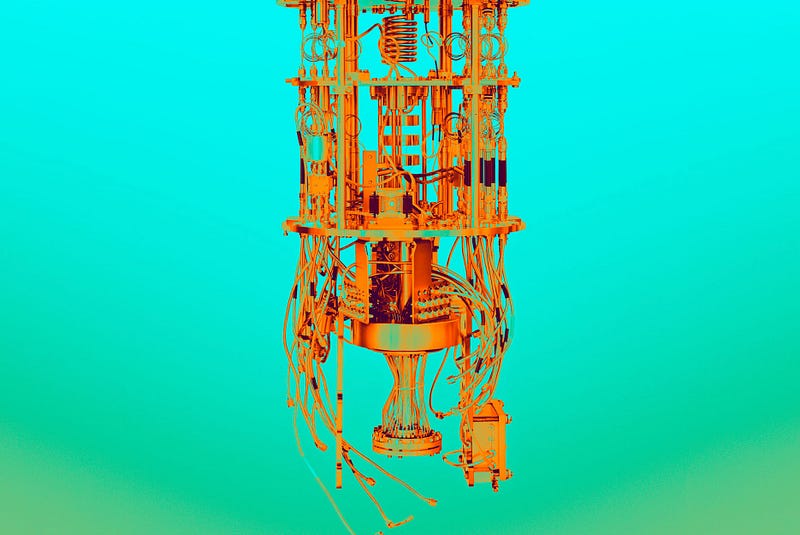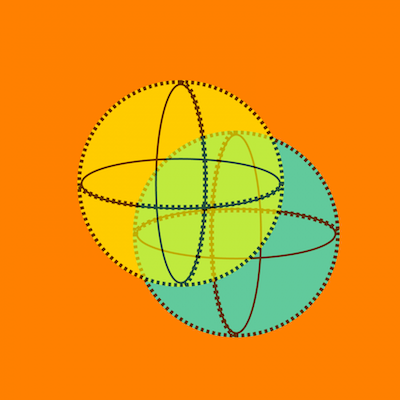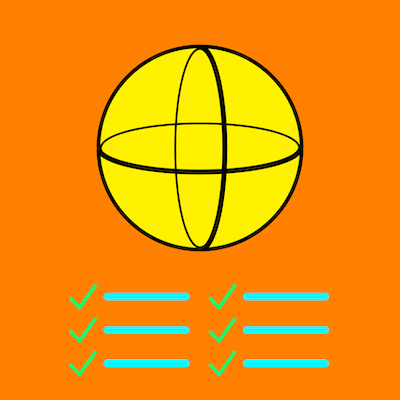Exploring the Fascinating World of Quantum Computing
Written on
Chapter 1: Understanding Quantum Computers
Quantum computers utilize the extraordinary principles of quantum mechanics to achieve remarkable advancements in computational power. They are anticipated to surpass even the most advanced supercomputers available today and in the near future. However, this does not imply that traditional computers will become obsolete. For most tasks, classical machines will continue to be the most efficient and cost-effective option. Nonetheless, quantum computers are set to drive significant innovations in sectors such as materials science and pharmaceutical development. Companies are already exploring their use to create lighter, more efficient batteries for electric vehicles and to aid in drug discovery.
The core strength of a quantum computer stems from its ability to create and manipulate quantum bits, or qubits.

Chapter 1.1: What is a Qubit?
Traditional computers operate using bits, which are electrical or optical signals that represent binary values—1s and 0s. Everything we do online, from social media posts to streaming music and videos, is represented through these binary digits. In contrast, quantum computers employ qubits, which are often subatomic particles like electrons or photons. The challenge lies in producing and managing qubits effectively. Companies such as IBM, Google, and Rigetti Computing utilize superconducting circuits that must be cooled to extremely low temperatures. Alternatively, IonQ uses electromagnetic fields to trap individual atoms on silicon chips within ultra-high-vacuum environments. In both methods, the objective is to maintain the qubits in a controlled quantum state.
Qubits possess unique properties that allow a group of them to deliver significantly more processing power compared to an equivalent number of classical bits. Two key phenomena are superposition and entanglement.

Section 1.1.1: The Concept of Superposition
Superposition allows qubits to simultaneously represent various combinations of 1s and 0s. This means that a quantum computer can process multiple outcomes at once. Researchers achieve superposition by manipulating qubits with precise lasers or microwave beams. As a result, a quantum computer with multiple qubits in superposition can evaluate a multitude of possibilities simultaneously. The final result of a computation is only revealed when the qubits are measured, which causes their quantum state to collapse to a definitive value of either 1 or 0.

Section 1.2: Understanding Entanglement
Entangled qubits exist in a unified quantum state, meaning that altering one qubit instantaneously affects its partner, regardless of the distance separating them. This phenomenon, which even perplexed Einstein, is fundamental to the power of quantum computing. In classical computing, doubling the number of bits results in a corresponding increase in computational power. However, due to entanglement, adding more qubits leads to an exponential enhancement in processing capability. Quantum computers utilize these entangled qubits in interconnected configurations to perform complex calculations efficiently.

Chapter 2: The Challenges of Quantum Computing
While quantum computers exhibit immense potential, they also face significant challenges, particularly regarding error rates due to decoherence.

Decoherence refers to the degradation of a qubit's quantum state due to environmental interference. External factors such as vibrations or temperature fluctuations can disrupt the delicate balance necessary for quantum computations. Researchers strive to shield qubits from these disturbances, employing supercooled environments and vacuum chambers. Despite these efforts, noise continues to introduce errors into calculations. Advanced quantum algorithms can mitigate some of these issues, but producing reliable "logical" qubits often requires many standard qubits, which limits a quantum computer's effectiveness.
The pursuit of achieving "quantum supremacy" remains a key focus for researchers.

Chapter 3: Future Applications of Quantum Computing
Quantum supremacy is the point where a quantum computer can execute calculations that are unattainable for even the strongest supercomputers. The exact number of qubits necessary to achieve this remains uncertain, as advancements in algorithms and supercomputing hardware evolve. Nevertheless, companies and researchers are actively testing their quantum machines against leading supercomputers.
As for applications, one of the most promising areas for quantum computing lies in simulating molecular behavior. Automotive giants like Volkswagen and Daimler are already using these systems to model the chemical properties of electric vehicle batteries to enhance their performance. Additionally, pharmaceutical companies leverage quantum computing to examine and compare compounds for new drug development.

Furthermore, quantum computers excel at solving optimization problems, allowing them to quickly evaluate numerous potential solutions. For example, Airbus employs them to determine the most efficient ascent and descent routes for aircraft, while Volkswagen offers a service for optimizing urban transportation routes.
Although it may take years for quantum computers to fully realize their potential, the ongoing shortage of skilled professionals and essential components poses challenges. Nevertheless, if these groundbreaking computing machines fulfill their promise, they could revolutionize entire industries and drive global innovation.
This video provides a thorough explanation of quantum computers, illustrating their mechanics and potential applications.
This short video offers a simple explanation of quantum computing, making the concepts accessible to all viewers.